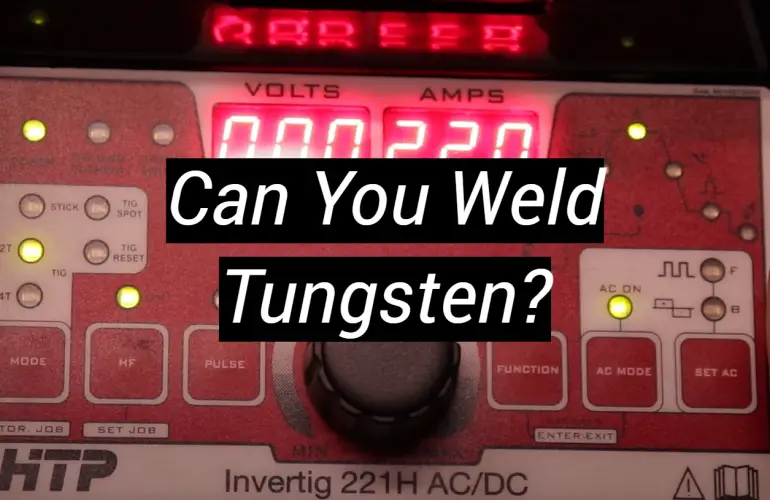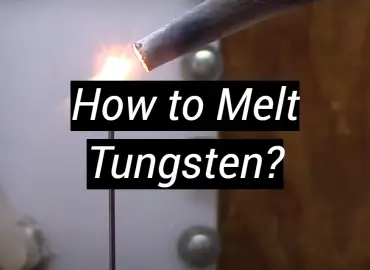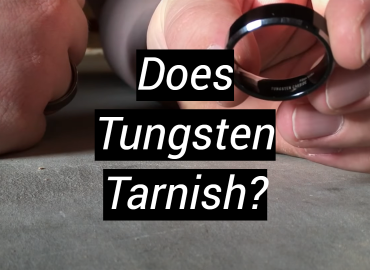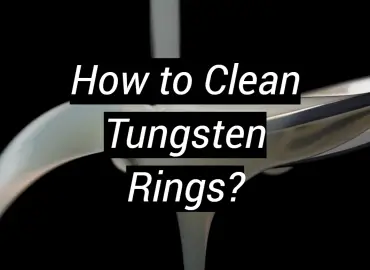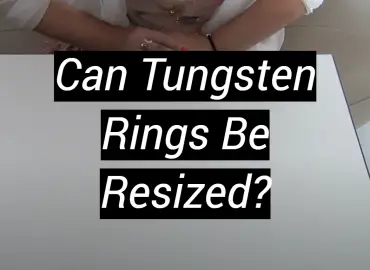Tungsten is a very tough and durable metal that is often used in welding. It has a very high melting point, making it perfect for welding together different types of metals. However, not everyone knows how to weld tungsten. If you are looking to learn how to weld tungsten, this article is for you! It will discuss the basics of welding tungsten and provide some tips on how to get started.
What is a welding process?
Welding is a fabrication process that involves joining two materials together through the use of heat, pressure or a combination of both. This process can be used for metals and non-metals alike. The type of welding process chosen depends on the thickness and physical properties of the materials being joined as well as the desired strength of the finished weld.
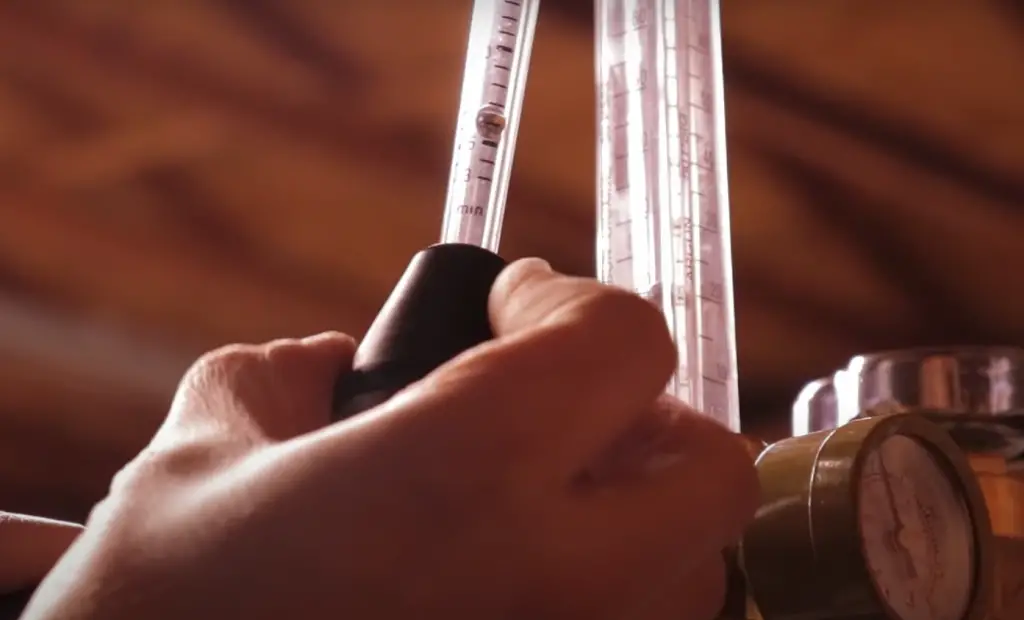
One form of welding is arc welding, which uses an electric current to create an electrical arc between two metal pieces. When this arc is created, it generates enough heat to melt the metal surfaces at their contact point and thus creating a welded joint that bonds these two metals together. Other common forms of welding include oxy-fuel gas cutting, inert gas-shielded welding, resistance spot welding, and soldering.
The most common materials that are welded together include aluminum, steel, copper, and brass. But, welding can be used to join a variety of different metals such as titanium, magnesium, and zirconium. Alloys of these metals can also be welded in the same manner as pure metal pieces. The type of welding process chosen will depend on the base metal being welded as well as the desired strength and size of the finished product.
In addition to joining two pieces together, welding is also used for creating or repairing structures, shapes, and geometries from metal materials. For example, it can be used to repair large machinery or build custom fixtures for automotive purposes, or even artwork! In any case, welding is a versatile process that can be used for many different applications [1].
Why use Tungsten for welding?
Tungsten is a preferred material for welding due to its properties: it has a high melting point, meaning that it does not easily melt or deform under extreme temperatures; it also has a low electrical resistance, which makes it ideal for arc welding applications. Additionally, tungsten’s strength and durability make it resistant to cracking and breakage during the welding process. Furthermore, tungsten can be used in all types of welding processes, from stick welding to plasma arc welding.
This broad application range makes tungsten an attractive option for many welders who need versatility in their tools. Finally, because tungsten is non-toxic and recyclable, using this metal for welding helps reduce the environmental impacts associated with other metals. All in all, tungsten is highly rated for its strength, durability, and versatility; it’s the perfect choice for welding projects of any size [2].
What materials can be welded with Tungsten?
Tungsten can weld a wide variety of materials, including steel, stainless steel, aluminum, brass, copper, titanium, and nickel alloys. The process of welding with tungsten is quite versatile and can be used in many different applications. Tungsten welding works well on thinner gauge materials or when working in tight spaces where other types of welding may not be practical.
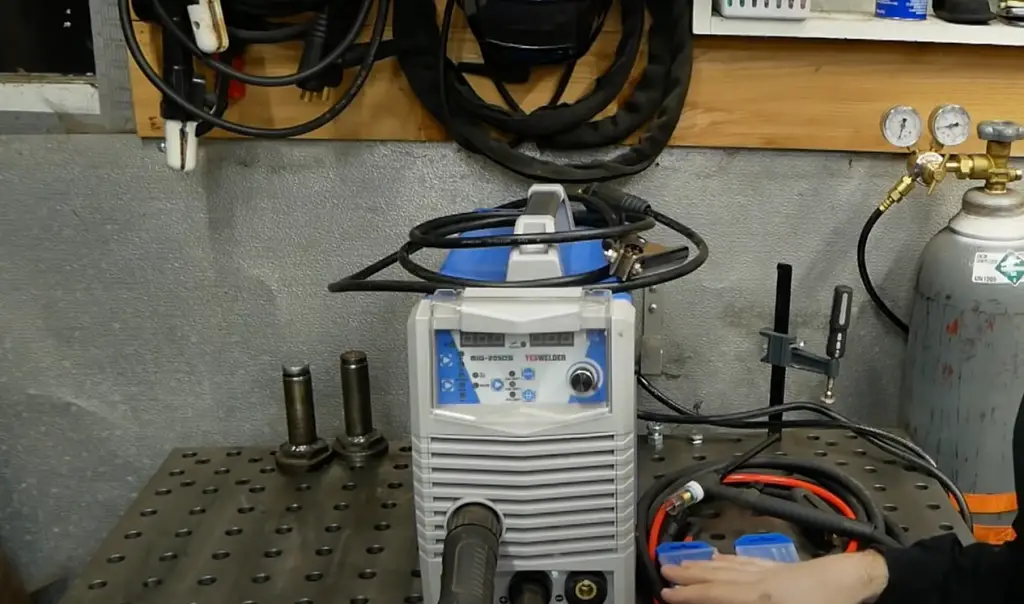
It also produces clean welds that are often superior to those achieved with traditional arc welding processes. Also, since no filler material is required with tungsten welding, it reduces the costs associated with purchasing and stocking additional materials. Tungsten welding remains one of the most popular methods for joining metals and other materials in industrial settings [3].
4 Major Types Of Tungsten For TIG Welding
Thoriated Tungsten Electrodes
Thoriated tungsten electrodes are the most popular TIG welding tungsten electrodes. Thoriated tungsten electrodes contain a small amount of thorium oxide (thoria), which increases their electron emission, making them more efficient and allowing them to withstand higher temperatures than pure tungsten. These electrodes come in sizes ranging from .020” to 1/8” and are available in both 2% thoriated and 1.5% thoriated varieties.
Ceriated Tungsten Electrodes
Ceriated tungsten electrodes are another popular option for TIG welding applications, offering similar performance as that of thoriated tungsten with some advantages over its counterpart. Ceriated electrodes contain a small amount of cerium oxide, which increases their performance at lower amperage levels, making them the ideal choice for applications such as aluminum welding.
Lanthanated Tungsten Electrodes
Lanthanated tungsten electrodes offer many of the same benefits as thoriated electrodes but with a few additional advantages. Lanthanated tungsten electrodes contain a small amount of lanthanum, an element that has similar properties to thorium oxide but allows for better arc starting and less electrode erosion than thoriated tungsten. These electrodes come in sizes ranging from .020” to 1/8” and are available in both 2% lanthanide and 1.5% lanthanide varieties.
Zirconiated Tungsten Electrodes
Zirconiated tungsten electrodes are the least common type of TIG welding tungsten electrodes. These electrodes contain a small amount of zirconium oxide which helps reduce electrode erosion and allows for more consistent arc stability than other types of tungsten. Zirconiated electrodes come in sizes ranging from .020” to 1/8” and are available in both 2% zirconiated and 1.5% zirconiated varieties [4].
How Can You Weld Tungsten?
Welding tungsten is a tricky process due to the extreme hardness of this metal. The most common method is TIG (Tungsten Inert Gas) welding, which uses an arc between a non-consumable tungsten electrode and the workpiece. It requires special equipment and precise settings, so it’s important to follow instructions carefully when using this technique.
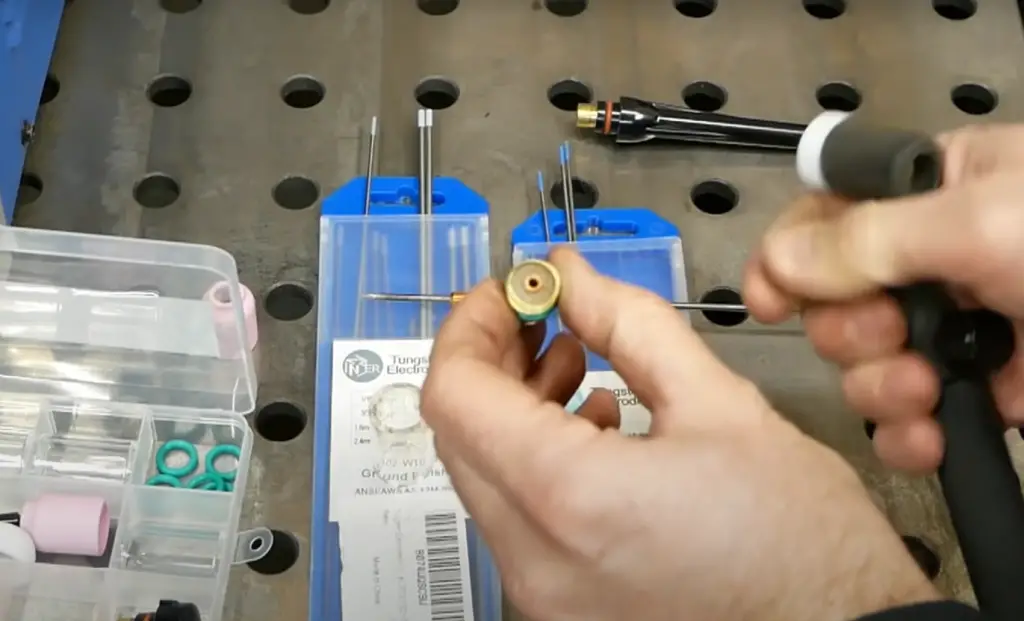
The first step in TIG welding with tungsten is choosing the right electrode and ensuring that it’s ground properly.
A proper angle must be maintained between the electrode and the material being welded, typically from 10-15 degrees.Next, the welding machine must be set to the correct current and voltage. Too much current will cause the tungsten electrode to melt away quickly, while too little can result in an inconsistent arc or poor penetration. The shielding gas should also be adjusted for optimal protection of the weld area.
Finally, steady and consistent hand movements are crucial for achieving a successful TIG weld with tungsten. Slow and smooth motions will help maintain an even heat distribution over the weld joint and prevent any irregularities from forming. Once these steps have been taken, welding tungsten is possible with proper technique and practice.
By following these steps, you can learn how to successfully weld tungsten metal with ease! With practice, you can even start to experiment with tungsten welding and discover the potential of this amazing metal.
FAQ
Can you weld tungsten with TIG?
Yes, you can weld tungsten with TIG welding. However, it is important to remember that the tungsten needs to be of a specific grade and size to work properly. Additionally, there are many different techniques used when welding with TIG. It is important to understand all of these before attempting any welding on tungsten. A qualified welder should always be consulted for proper safety and guidance while welding with this metal alloy.
What are the purposes of welding tungsten?
Welding tungsten is used in many different applications, including aerospace, automotive, medical and industrial. Tungsten can be used to create strong joints that are resistant to wear and tear or it can be used to form intricate shapes. Additionally, the heat generated by the welding process can be used to create a variety of finishes on tungsten surfaces. Some examples of these finishes include anodizing and plating. Tungsten welding is also useful for repairing cracks in components made from other metals such as aluminum or stainless steel.
What kind of safety precautions should I take when welding with tungsten?
Safety is always important when working with any type of metal alloy and tungsten is no exception. Welders should always wear proper protective equipment such as a welding helmet, gloves, and long sleeves.
Flammable materials should be kept away from the weld area and all sparks and debris should be disposed of properly. Finally, special attention should be paid to any exposed electrical wiring in the vicinity of the welding process.What type of TIG welding machine do I need to weld tungsten?
The type of TIG welding machine required depends on the thickness and grade of tungsten being used. Generally speaking, machines with higher power outputs are needed for thicker grades of tungsten while those lower power outputs can handle thinner grades. It is always best to consult a qualified welder for advice on choosing the right machine. Additionally, it is important to use welding rods specifically designed for tungsten welding. These are available from most welding supply stores.
Can I weld stainless steel with TIG?
Yes, you can weld stainless steel with TIG welding. However, like other metals, the type of machine and grade of stainless steel will determine the success of the weld.
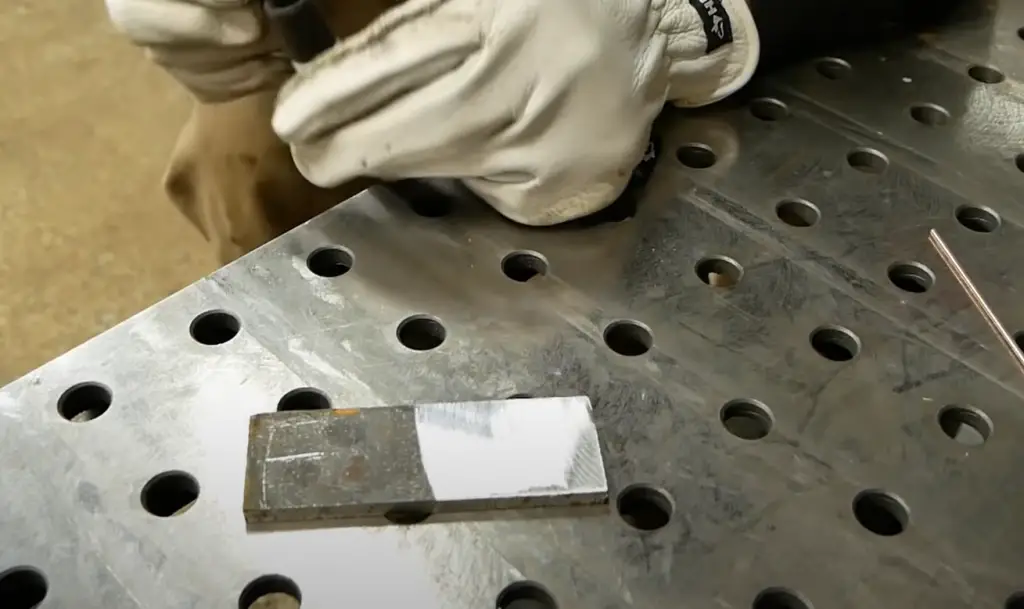
It is important to ensure that the amperage used for welding is appropriate for the thickness being worked on and that proper safety precautions are taken. Additionally, cleaning and prepping the stainless steel before welding can help prevent oxidation which can cause porosity in the welds. A qualified welder should always be consulted for proper safety and guidance while welding with this metal alloy.
Can I weld aluminum with TIG?
Yes, you can weld aluminum with TIG welding. However, it is important to understand that the techniques used in welding aluminum differ from those used with other metals such as steel or tungsten. Additionally, the amperage must be adjusted appropriately for the thickness of the aluminum being worked on to ensure a successful weld. Proper safety precautions should always be taken when working with any type of metal alloy, including aluminum. A qualified welder should always be consulted for proper safety and guidance while welding with this metal alloy.
Can you stick weld tungsten?
No, you cannot stick weld tungsten as it is a non-ferrous metal and therefore not compatible with the electric arc welding process. Stick welding requires an electric current to be made between two pieces of steel or other ferrous metals to create a bond. Tungsten can only be welded using gas tungsten arc welding (GTAW) or plasma arc welding (PAW).
Is it possible to weld carbide?
Yes, it is possible to weld carbide. However, this process requires specialized equipment and materials and should only be done by a certified welder. Carbide welding is typically done with TIG welding or plasma arc welding since the extreme temperatures required for fusion are too great to be achieved with standard MIG or stick welding machines. Additionally, proper safety precautions must always be taken when working with any type of metal alloy, including carbide.
Which is the best tungsten for TIG welding stainless steel?
The best tungsten for TIG welding stainless steel is pure or 2 percent thoriated tungsten. This type of tungsten provides the highest electrical conductivity and ensures a steady arc when welding stainless steel. Additionally, pure tungsten helps to reduce contamination in the weld area as it does not contain any oxides that can cause porosity in the welds. Finally, it is important to note that special attention should be paid to any exposed electrical wiring near the welding process when using this metal alloy.
Useful Video: How To Ball Your Tungsten For Welding Aluminum
Conclusion
Welding tungsten electrodes is an essential part of welding and as we have seen, several considerations must be taken into account. The type and size of the tungsten electrode used will depend on your individual needs and the material you are working with. Paying close attention to the manufacturer’s recommendations along with other factors such as electric current and arc length will ensure that you get the most out of your welding project. By understanding how tungsten electrodes work, you can make sure that your welds are strong, durable, and safe. With proper use and care, these reliable tools can help you complete any metalworking task.
References:
- https://fractory.com/types-of-welding-processes/
- https://www.superradiatorcoils.com/blog/tig-welding-in-manufacturing-advantages-and-tradeoffs
- https://www.thefabricator.com/thefabricator/article/arcwelding/guidelines-for-tungsten-electrodes
- https://www.axxair.com/en/blog/the-different-types-of-electrodes-used-in-orbital-tig-welding

